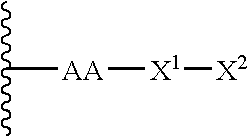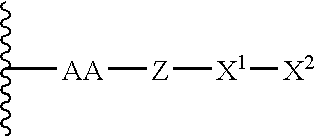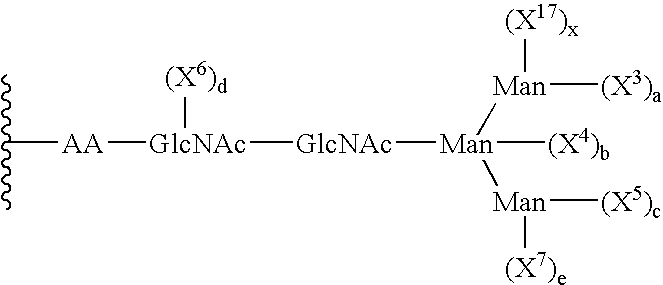Remodeling and glycoconjugation of peptides
a glycoconjugation and peptide technology, applied in the direction of peptide/protein ingredients, depsipeptides, antimycotics, etc., can solve the problems of affecting the efficacy, negating any potential therapeutic benefit of peptides, and limited the use of therapeutic peptides
- Summary
- Abstract
- Description
- Claims
- Application Information
AI Technical Summary
Benefits of technology
Problems solved by technology
Method used
Image
Examples
experimental examples
[1807]The invention is now described with reference to the following Examples. These Examples are provided for the purpose of illustration only and the invention should in no way be construed as being limited to these Examples, but rather should be construed to encompass any and all variations which become evident as a result of the teaching provided herein.
[1808]A. Glycosylation
[1809]The materials and methods used in the experiments presented in this Example are now described.
[1810]1. Sialylation and Fucosylation of TP10
[1811]This example sets forth the preparation of TP10 with sialyl Lewis X moieties and analysis of enhanced biological activity.
[1812]Interrupting blood flow to the brain, even for a short time, can trigger inflammatory events within the cerebral microvasculature that can exacerbrate cerebral tissue damage. The tissue damage that accrues is amplified by activation of both inflammation and coagulation cascades. In a murine model of stroke, increased expression of P-s...
PUM
| Property | Measurement | Unit |
|---|---|---|
| covalent | aaaaa | aaaaa |
| molecular weight distribution | aaaaa | aaaaa |
| structure | aaaaa | aaaaa |
Abstract
Description
Claims
Application Information
 Login to View More
Login to View More - R&D
- Intellectual Property
- Life Sciences
- Materials
- Tech Scout
- Unparalleled Data Quality
- Higher Quality Content
- 60% Fewer Hallucinations
Browse by: Latest US Patents, China's latest patents, Technical Efficacy Thesaurus, Application Domain, Technology Topic, Popular Technical Reports.
© 2025 PatSnap. All rights reserved.Legal|Privacy policy|Modern Slavery Act Transparency Statement|Sitemap|About US| Contact US: help@patsnap.com



